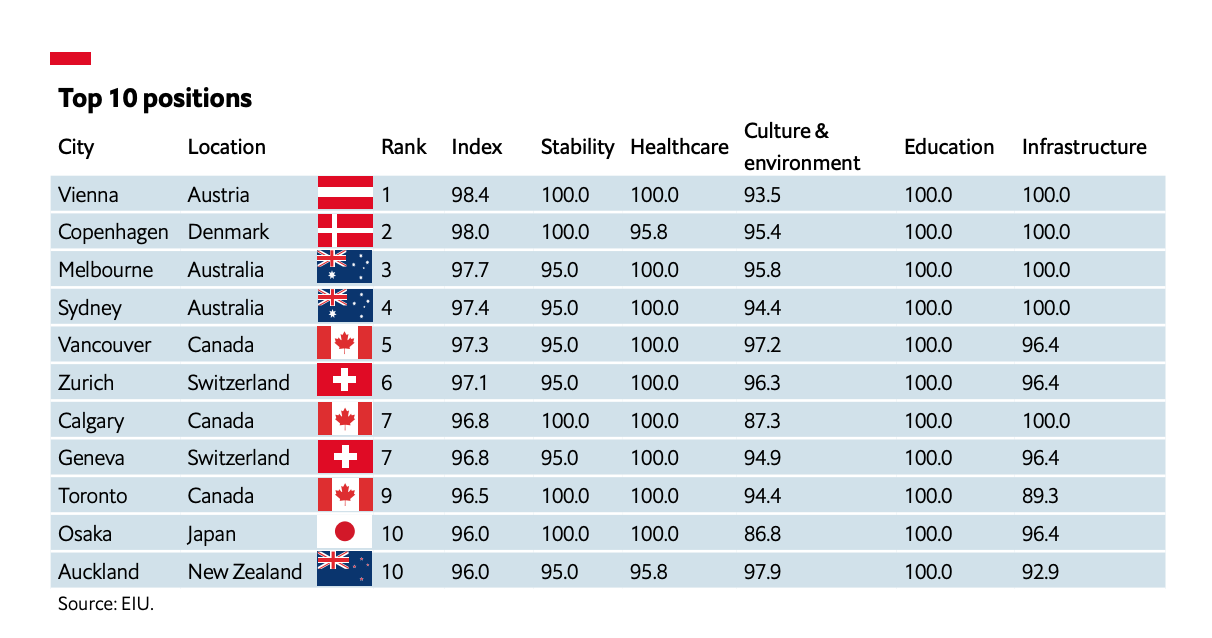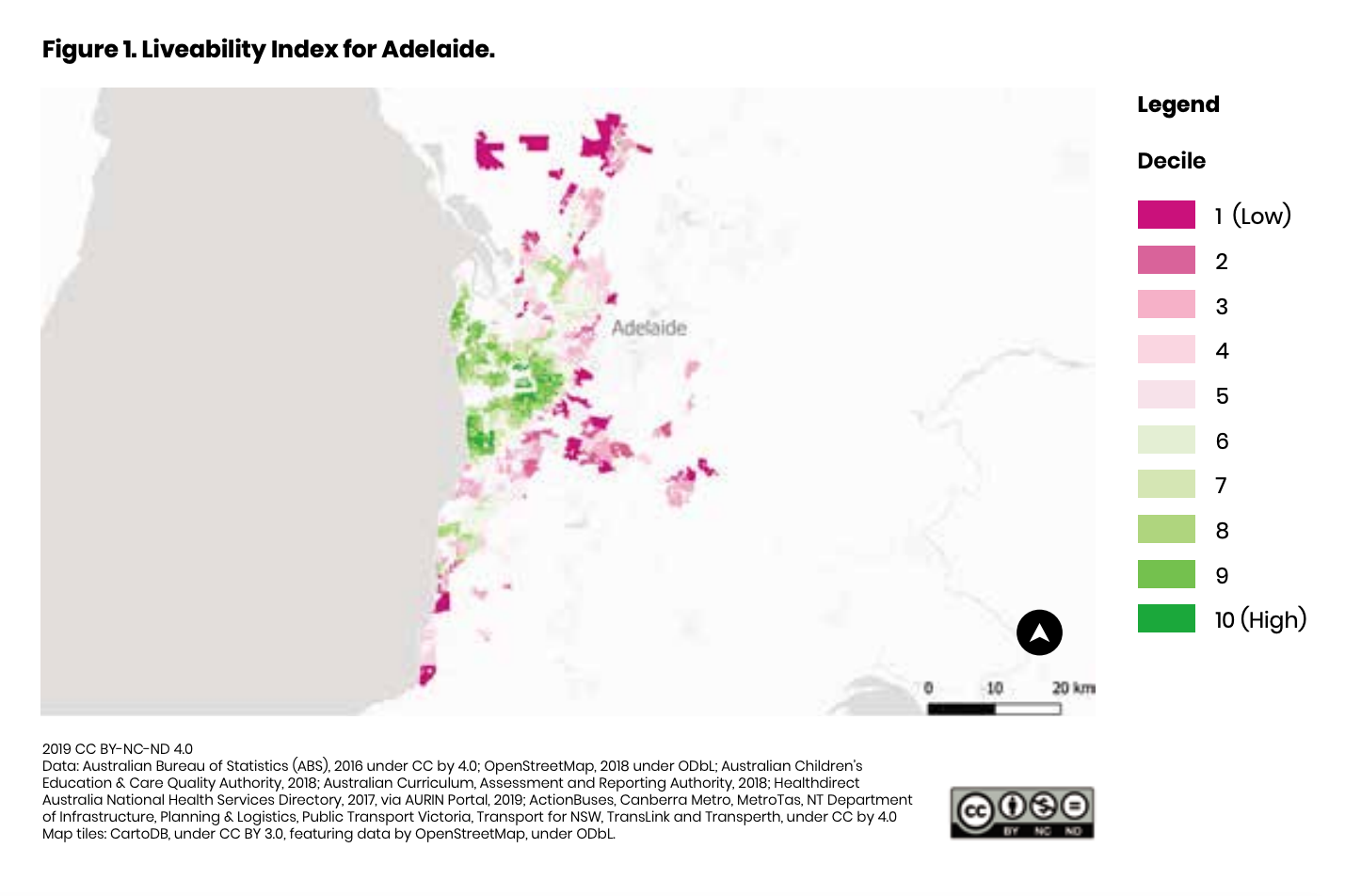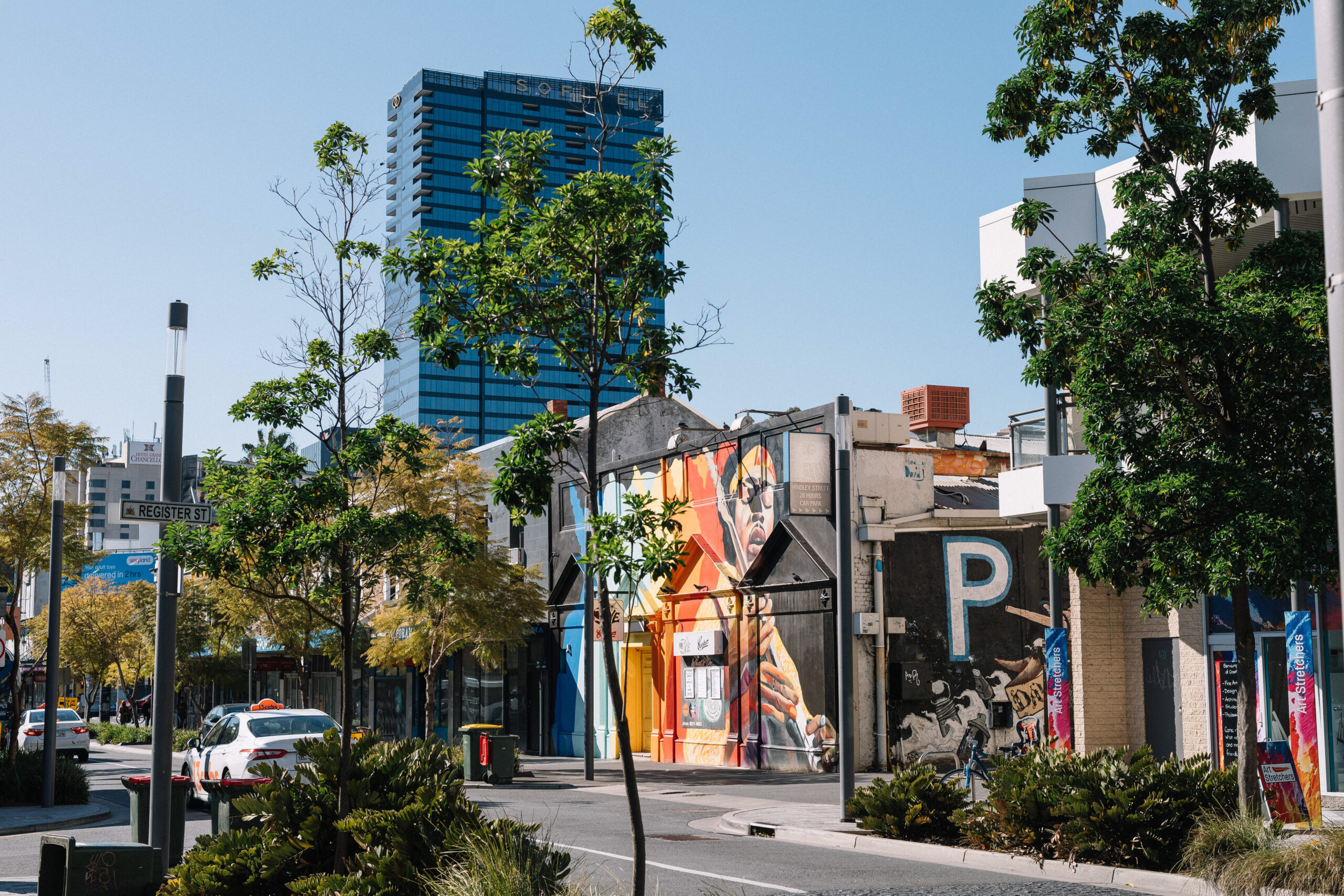What makes a city liveable?
Every year the Economic Intelligence Unit (EIU) conduct the Global Liveability Index, ranking cities from around the world on five key indicators that they believe demonstrate a safe and thriving city.
So what makes a liveable city?
According to the EIU its stability, healthcare, culture and environment, education and infrastructure. These are the categories under which each city is judged and given a final score on their liveability index.
- Stability: Political stability, crime rates, and the likelihood of civil unrest or conflict.
- Healthcare: Quality and accessibility of healthcare services, including hospitals, clinics, and healthcare professionals.
- Culture and Environment: Availability of cultural amenities such as museums, theaters, and restaurants, as well as environmental factors such as pollution levels, green spaces, and access to nature.
- Education: Quality of schools, universities, and educational resources, as well as opportunities for lifelong learning.
- Infrastructure: The quality and reliability of transportation networks, utilities (water, electricity, gas), communication systems (internet, mobile networks), and housing.
The EIU Liveability Index is widely used by individuals, businesses, and policymakers to compare cities and make decisions related to travel, investment, and relocation.
While not placed as Australia’s most liveable city, that honour went to Melbourne, Adelaide was one of the biggest jumps in ranking, improving 19 places from 30th in 2022 to take out the 13th spot.

At the time the South Australian premiere Peter Malinauskas said, “This is a very positive improvement in Adelaide’s ranking on The Economist’s Global Liveability Index. We all know Adelaide has an incredible lifestyle that is the envy of the world.”
“I have an ambition for our city to continue to do even better in coming years as one of the most liveable places on earth.”
In 2023 the Liveability Index saw improvements overall, rising from an index score of 73.2 out of a possible 100 in 2022 to 76.2. This was mostly owning to a general stem in the flow of covid-19 infections, as well as healthcare and education scores improving in multiple cities in Asia, the Middle East and Africa. The only area to see a decline was the category of stability, a reaction to many instances of civil unrest around the world and amid a cost-of-living crisis.
Experts at The Economist attribute a shift back towards normality after the Covid-19 pandemic as one of the biggest drivers of changes in the global liveability rankings.
But it was also covid that brought into sharp focus some of our fundamental needs when it comes to living in a city, like access to green spaces in close proximity to our housing to promote healthy minds and bodies, as well as social interaction. As our population balloons and developers move in to create more high density housing, our inner city green spaces are slowly shrinking.
This is also reflected in the index, which favours mid-sized cities with relatively low density, turning away cultural hubs like London, New York and Paris who “have become victims of their own success due to higher crime rates and strained infrastructure.”
A whopping 50 percent of top ranking city Vienna is covered with green spaces. Residents have access to forests, parks, vineyards and gardens, as well as the Danube river within the Austrian capital city limits, giving them ample access to nature.
Subsidised housing, access to public transport and urban spaces that foster connection are also key to liveable spaces.
However it has been argued that indexes like the EUI fail to adequately take into account inclusion. While cities like Melbourne and Adelaide offer incredible amenities, it has been argued that inner city dwellers are the ones that reap the benefits over neglected fringe dwellers.
In a report card created by RMIT University’s Centre for Urban Research titled ‘Creating liveable cities in Australia: Mapping urban policy implementation and evidence-based national liveability indicators’ it was stated: “There is also substantial variation within cities, with inner-city areas (and many middle-level suburbs) substantially better served than outer suburbs by the urban design, infrastructure and land use planning policies needed to create liveable communities.”
In this same study, Adelaide’s scorecard demonstrates that the analysis of liveability for Adelaide suburbs reveals wide variation over the city.

Some interesting stats from the Adelaide report card:
- The percentage of residences with proximate access to regular public transport in Adelaide is 57%
- The percentage of residences living within 400m of public
open space of at least 1.5 hectares in Adelaide is 47% - In Adelaide, the percentage of households in the bottom 40 percent of the income distribution spending more than 30 percent of household income on housing costs is 34%
So while Adelaide has many of the key elements that constitute a liveable city, there is still some work to be done to make sure those elements are accessible and available to all Adelaide inhabitants.
It’s important to note that while the EIU Liveability Index provides valuable insights, it’s just one of many tools available for evaluating cities, and different people may prioritize different factors based on their individual preferences and circumstances.
Square Holes regularly work with government and other organisations on key projects that shape our city and other cities around Australia. To learn more about us head here.




